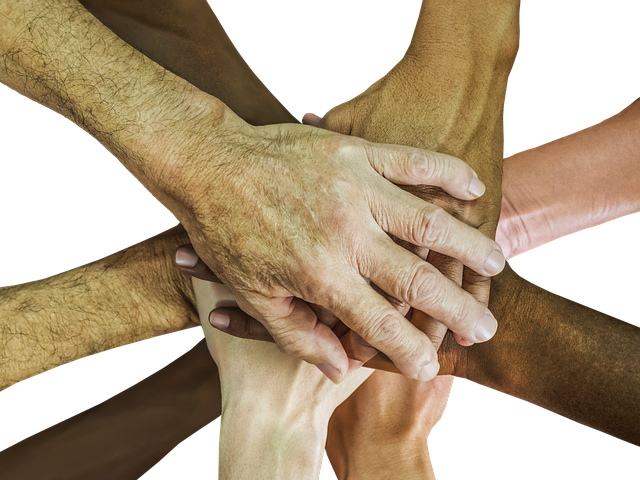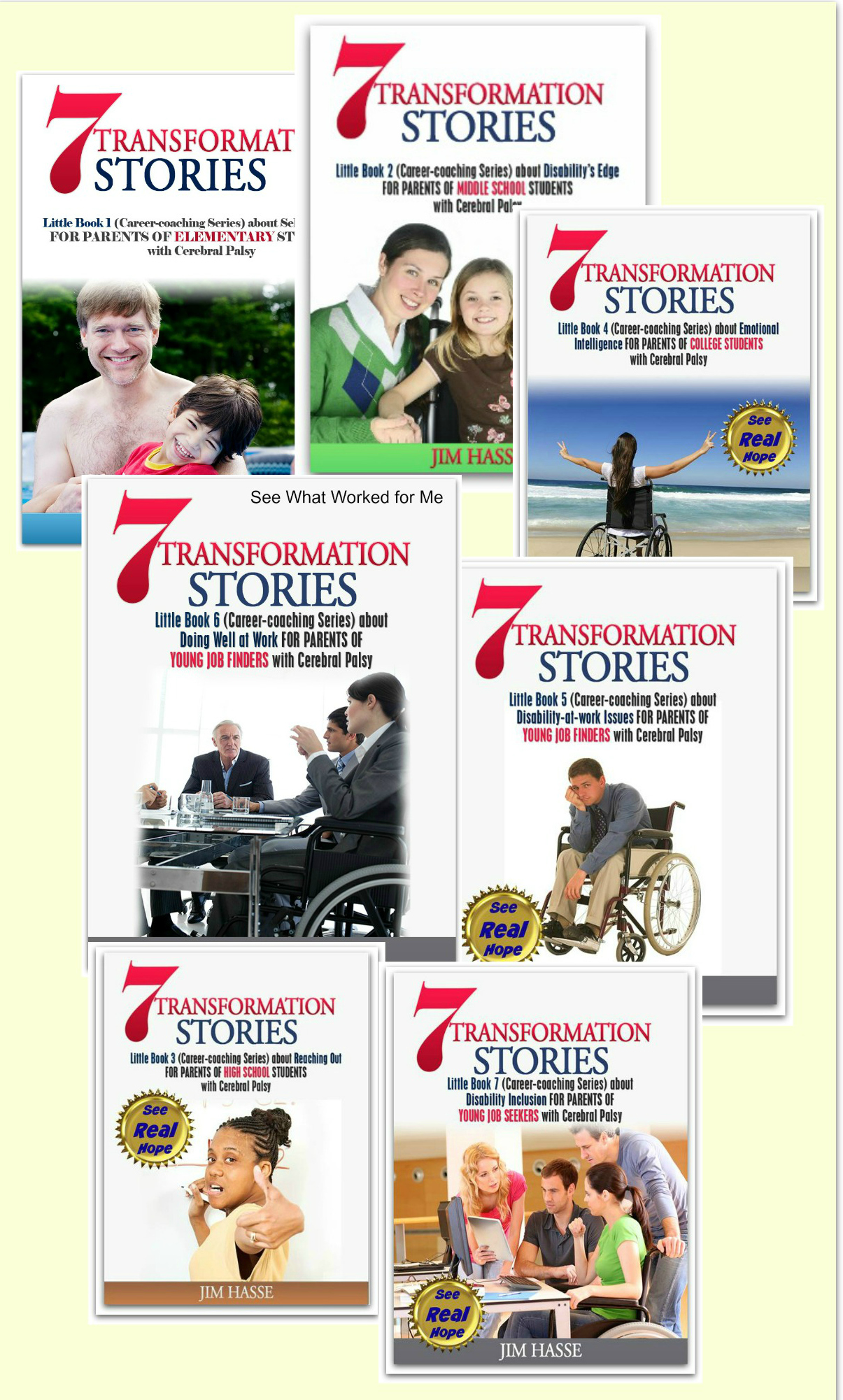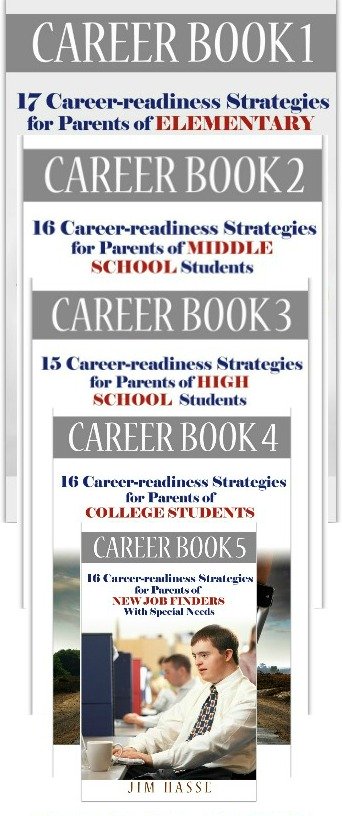Teamwork in the Workplace: Cerebral
Palsy Career Builder for High Schoolers
By Jim Hasse, ABC, GCDF, Disability Employment Expert
_________________________________________________________
Teamwork in the workplace may seem like a premature topic for your high school student with cerebral palsy (CP). Yes, there’s plenty of time to grow after your youngster first starts working in high school.
But, youngsters with CP will be steps ahead of their able-bodied competitors in finding a part-time job now and an entry-level job after school, if they can find, at an early age, what role they can best play in a team effort.
That’s why volunteering for a service organization or just working as a member of the homecoming committee as well as holding several paid, part-time jobs while in high school are so important. Each work experience gives youngsters an opportunity to discover their “teamwork voice.”
In fact, taking risks, building self-esteem, flexing leadership muscles, developing business savvy and building solid at-work relationships are all essential building blocks for developing an effective teamwork presence for the workplace.

Which profile fits your youngster?
But, there’s also another, faster way for youngster to develop a teamwork voice -- even at the high school level.
Allen Fahden and Srinvasan Namakkal studied teamwork for decades. Their Innovate with C.A.R.E. Profile (now called Team Dimensions Profile®) can help your youngster identify his or her potential role in a team setting.
According to Allen Fahden and Srinvasan Namakkal, successful team members do the right thing at the right time -- not the same thing at the same time. While team members work together toward a common goal, individuals still must play their individual parts in the process.
Fahden and Namakkal's instrument helps individuals identify their most natural team role so they can work from their strengths. The Team Dimensions Profile®, a product of Inscape Publishing Inc., a leading provider of DiSC® assessments, is available through authorized distributors of Inscape’s products.
Here's a glimpse at the components of Fahden and Namakkal’s original Innovate with C.A.R.E. Profile:
Creator
- Generates fresh ideas and original concepts that often defy generally accepted rules.
- Is not constrained by fear of failure.
- Hands off tasks to an Advancer.
Advancer
- Recognizes new ideas in the early stages.
- Chooses the direct and most efficient means to achieve objectives.
- Hands off tasks to a Refiner.
Refiner
- Challenges concepts and ideas, often playing the "devil's advocate," to detect flaws and potential problems.
- May hand ideas and plans back to an Advancer or a Creator before handing off tasks to Executor.
Executor
- Lays the groundwork for implementation in an orderly, well thought-out manner.
- Prefers that others take the lead but enjoys the responsibility of final implementation.
Facilitator
- Monitors how well individual team members are contributing to the team effort.
- Identifies the need for hand-offs from one role to another.
You often hear a Creator say, "I have an idea," while an Advancer might say, "I hear an idea I like." The Refiner will likely tell you, "I can poke holes in your idea so you can make it better," while the Executor often volunteers to gather the information so the idea can be implemented. The Facilitator on your team is your "deal maker," who is concerned about handing off the team spotlight from one role to another at the right time.
A balanced team (one where the members complement one another) is more likely to achieve breakthrough performance, according to the creators of the Team Dimensions Profile.
Watch your high school youngster interact with friends, play games, participate in
sports and solve problems with the help of others. It'll give you a hint of how he or she will eventually react to situations where teamwork in the workplace is essential.
Which
team role is the “best fit”
for your high school youngster?
Creator, Advancer, Refiner, Executor or Facilitator?
Join PACER’s Facebook
discussion.
Here’s is one situation that could tell you a lot about where your youngster fits in the Team Dimensions Profile. Does your youngster actively participate within an informal, temporary team of vendors, counselors and funders while choosing the right adaptive equipment needed to do well in high school? If so, is there a noticeable difference in how your youngster functions in one of these roles: creator, advancer, refiner, executor or facilitator? Is she or he more noticeably comfortable in one of those roles?
In my early 20s, I recognized that I was a facilitator -- not by taking a course and completing a teamwork instrument such as The Team Dimensions Profile®. I got a feel for what I enjoyed while on the job, and that became evident to my supervisor.
I refined my facilitator skills through the years, and, at 35, I had an opportunity to first use them as a leader of a corporate communication team (first as a two-person department and then eventually as a team of five full-time people with additional college interns each summer).
When the opportunity presents itself, help your youngster recognize the various team roles and which are a “natural” for him or her. Doing that during high school will prepare your youngster for the transition from school to work.
Remember, prospective employers (even at the burger-flipping level) are seeking to balance their teams. Youngsters who recognize that need for teamwork in the workplace and have the savvy to show how they can fit in will have a “leg up” on other job candidates.
At that point, your youngster’s ethnicity, gender, sexual preference -- and CP -- will be irrelevant.
Which
team role is the “best fit”
for your high school youngster?
Creator, Advancer, Refiner, Executor or Facilitator?
Join PACER’s Facebook
discussion.
Return from Teamwork in the Workplace to Part-time Jobs
Go to Cerebral Palsy Career Builders
This is Creative Commons content. You can freely and legally use, share and repurpose it for non-commercial purposes only, provided you attach this sentence and the following attribution to it (including the two links):
Originally written and illustrated by Jim Hasse, ABC, GCDF, owner of Hasse Communication Counseling, LLC, who, as a person with cerebral palsy, served for 10 years as a vice president in a Fortune 500 company during his 29-year career in corporate communication. He’s an Accredited Business Communicator, certified as a Global Career Development Facilitator and author of 14 Amazon books about disability awareness and disability employment issues.





